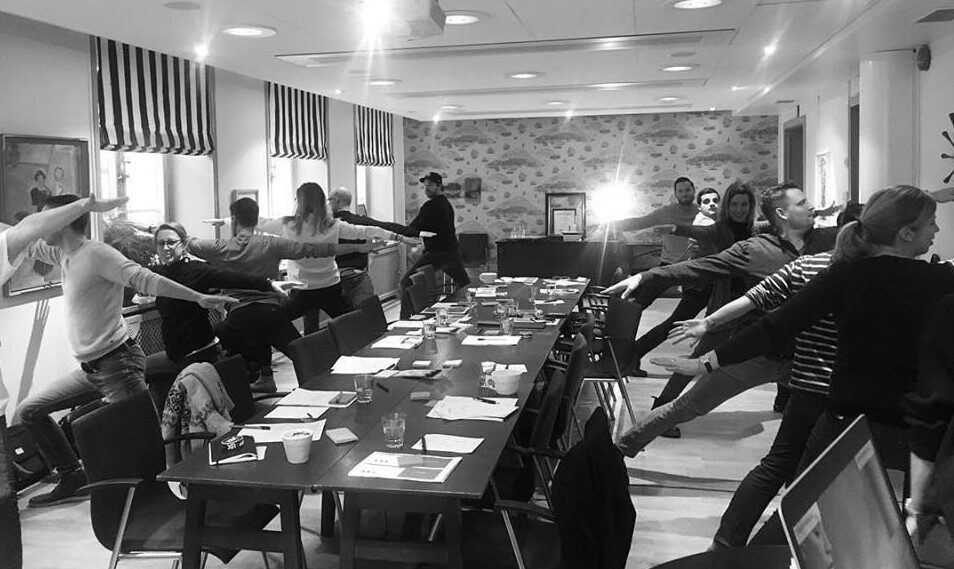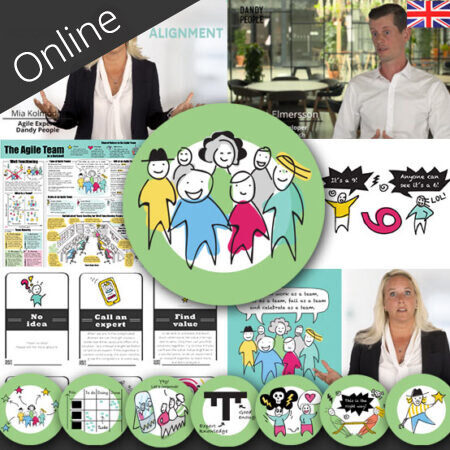Agility is about adapting and delivering value. More and more organisations are discovering that they either need to get on the agile train or fall hopelessly behind.
Many of them turn to frameworks to adapt agile ways of working. But what they get is another framework that will sit on top of the others and cause more confusion and frustration. What they need is to focus on the real problems like organisation, leadership and culture. I’m going to use SAFe as an example in this text (there are other frameworks trying to solve this out there but I know more about SAFe).
A framework with a clear hierarchical role chart, process arrows, planning cycles and new roles is a way of satisfying the controlling part of an organisation. And it is exactly this part that we need to remove, if we want to be truly agile. To dare go down the agile road you need trust from leaders and in many organisations that is the exact thing they are lacking. So their own fear of losing control drives them to turn to things their recognize, roles and hierarchy, processes and planning, things that are feeding the controlling needs and is satisfying their own fears.

When introducing a framework like SAFe you are forced to focus on roles and planning cycles instead of culture, organisation and leadership. To get the right people in these roles is not an easy task an one that is impossible if there are no people with an agile mindset in the organisation. When people without agile mindset take on these roles what we get is another gant chart and detailed planning that will not adapt to the changing needs of the customer.
SAFe says leaders go first and teach the pilars of house of Lean to management, but it is not enough to go on a two day education and then be ready for a mindset shift and start changing your behavior. Patterns and behaviors within a organization is highly dependent on culture and will require patience and consistently to change. Therefor you need to work on values, coaching behavior and system changes to enable the culture shifts to a learning and team based organisation that agile requires to succeed. Because it is not in the knowledge we have that make the change to agility happen, it is our ability to turn that knowledge into actions that build an agile culture.
Agile is about trusting in everyone’s ability. That the people you have hired are there because they share your values, believe in the vision and want to work on the goals to accomplish that. You need to focus on building an organization where people with different skills can collaborate, innovate and develop and most importantly one where the culture is based on trust.
Three things you need to create an agile organisation:
- Managers that are focused on people growth and trust the people they hire
- Teams with skills needed to deliver customer value
- Common values, mission and vision
One argument I’m getting is that “Well we won’t get them to change the organisation so it’s good that they take on SAFe to get some agility”. Yes, I agree, but it is still a poor argument for not facing the real problems of culture, leadership and organisation.
These are hard things to change but company leaders have the responsibility to make sure your company survives on the new market and the best way to do that is to create a culture that can use the intelligence from teams and adapt to the customers needs. If you don’t there will be no more company to go to.
You need good leadership, a trusting culture and employees that are dedicated to your company vision.
You don’t need another framework.



